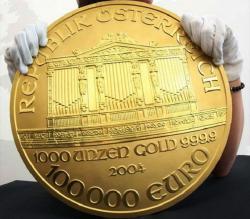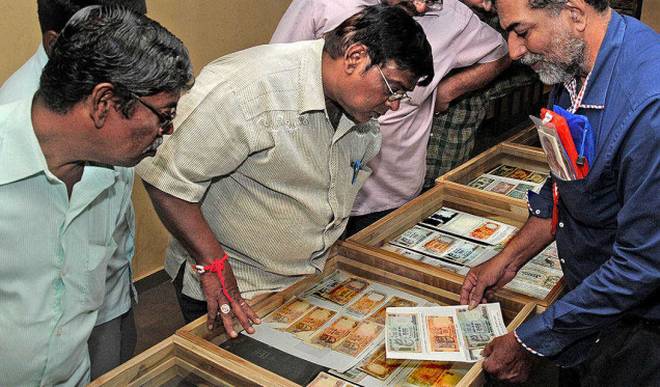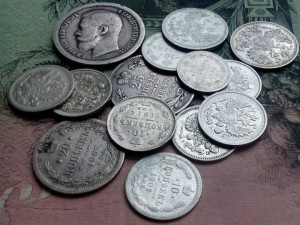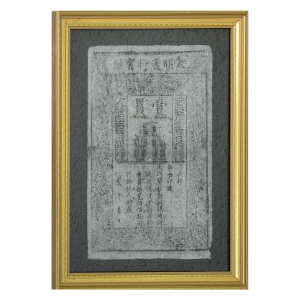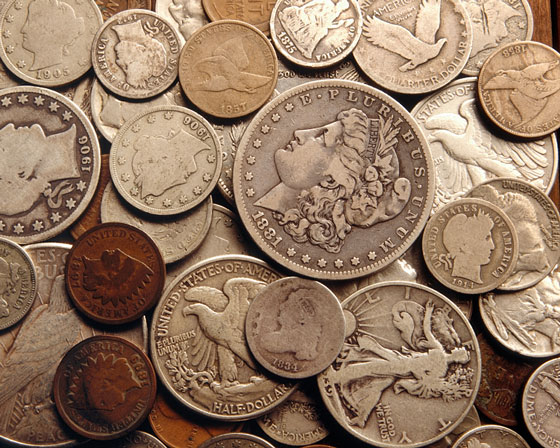Cleaning of old coins
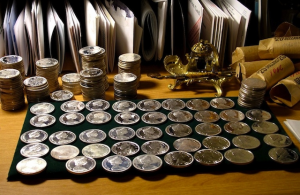 The purpose of this message is to acquaint interested readers with the most simple and safe methods of cleaning coins, which the author can recommend based on his many years of experience in the restoration of an archaeological metal at the State Hermitage Museum. Clearing coins is one of the crucial types of restoration, it is important for their study, dating, identification and storage. Ancient coins made of silver and copper alloys, found in treasures or in other archaeological excavations, most often enter the restoration workshop highly corroded, and sometimes completely mineralized. Under the action of water and salts, copper is destroyed in the soil to form green carbonates and chlorides, red cuprous oxide and black oxide. In the corrosion layers on bronze coins found compounds of tin and lead. Silver alloy coins with copper are often coated with copper corrosion products. Sometimes silver over the action of chloride salts turns into gray-violet chloride – horny silver. In the air, copper alloys darken from oxidation, and silver – as a result of the formation of sulfide. The restorer should be more wary of the restoration of numismatic monuments. In particular, it is necessary to make the right choice of the reagent necessary for cleaning it from corrosion, since the reagent successfully applied to some coins makes the litter unsuitable for others, i.e. will result in their destruction or in serious distortion of their appearance. It is desirable to achieve and preserve the “Noble Patina” – a kind of certificate of antiquity of subjects. When you start cleaning coins, you should first find out what metal they are made of, whether they have a metal core, to what extent it is preserved, what mudflows the coins are covered with. It is important, for example, in corrosive crusts on copper coins to determine the presence of copper chloride, which in wet atmospheric conditions causes an active corrosive process – “bronze disease.” To detect copper chloride, use a moisturizing agent. Yeru simple device: the glass container is filled with water to approximately 1/3 the volume of audio; Above the water is placed a perforated (perforated) plate of plastic, plexiglas, or porcelain on which coins with a corrosive layer are placed. The vessel is tightly closed with a lid. In this state, it is left for 1-3 days. The action of the humidification chamber is reduced to the acceleration of the processes occurring under the influence of air humidity, which will help identify areas of active corrosion and makes it possible to choose more successful cleaning methods. In addition, being in the chamber contributes to loosening the surface layer oxides, facilitating further operations but cleaning. If copper chloride is present in the corrosive layer, then droplets of liquid appear on the surface of the coins, colorless or slightly greenish. Otherwise, the droplets do not protrude: carbon dioxide, copper oxide and copper oxide are stable in wet conditions (note that horny silver on silver coins is also stable). When copper chloride is detected, it must be removed from the deepest pores and very thoroughly. Often in archaeological excavations, coins are found “skipchevshimi”, i.e. forming a shapeless mass due to oxides connecting them. We do not recommend separating such coins by incandescence and lowering in cold water. To avoid loss, such a “lump” should be placed in a 5–10% caustic soda solution and heated to 30–50 °. After this, the coins can be separated from each other, determine the condition of each of them, and proceed to cleaning. The main ways of clearing coins are mechanical, chemical and electrochemical. During restoration, the combination of a mechanical method with others is most often practiced. Mechanical processing consists in removing surface layers: earth, sand, and individual hillocks of corrosion. It is made using various brushes (bristle, brass and glass fiber) scalpels and dental burs of various sizes. But it is necessary to use the mentioned tools with great care. When used ineptly and rudely, they are easy to apply scratches that to some extent distort the inscription, images, etc. Chemically, in combination with mechanical, coins are coated, covered with a thick layer of corrosion products, but preserving the metal base, as well as coins of gold and silver. To remove the cherry-red coating of copper oxide from copper coins, you should omit the coins in 5-15% a solution of ammonia, but so that they are fully immersed in the solution, because in contact with air the effect of ammonia on the metal is destructive. Instead of ammonia, you can successfully use a 5-10% solution of ammonium carbonate, which is less aggressive towards copper and bronze. If copper comets are covered with salts consisting of copper carbonate (dark green), these layers should be removed with 5-10% citric acid solution. It slowly dissolves salts and oxides of copper and does not dissolve metallic copper.
The purpose of this message is to acquaint interested readers with the most simple and safe methods of cleaning coins, which the author can recommend based on his many years of experience in the restoration of an archaeological metal at the State Hermitage Museum. Clearing coins is one of the crucial types of restoration, it is important for their study, dating, identification and storage. Ancient coins made of silver and copper alloys, found in treasures or in other archaeological excavations, most often enter the restoration workshop highly corroded, and sometimes completely mineralized. Under the action of water and salts, copper is destroyed in the soil to form green carbonates and chlorides, red cuprous oxide and black oxide. In the corrosion layers on bronze coins found compounds of tin and lead. Silver alloy coins with copper are often coated with copper corrosion products. Sometimes silver over the action of chloride salts turns into gray-violet chloride – horny silver. In the air, copper alloys darken from oxidation, and silver – as a result of the formation of sulfide. The restorer should be more wary of the restoration of numismatic monuments. In particular, it is necessary to make the right choice of the reagent necessary for cleaning it from corrosion, since the reagent successfully applied to some coins makes the litter unsuitable for others, i.e. will result in their destruction or in serious distortion of their appearance. It is desirable to achieve and preserve the “Noble Patina” – a kind of certificate of antiquity of subjects. When you start cleaning coins, you should first find out what metal they are made of, whether they have a metal core, to what extent it is preserved, what mudflows the coins are covered with. It is important, for example, in corrosive crusts on copper coins to determine the presence of copper chloride, which in wet atmospheric conditions causes an active corrosive process – “bronze disease.” To detect copper chloride, use a moisturizing agent. Yeru simple device: the glass container is filled with water to approximately 1/3 the volume of audio; Above the water is placed a perforated (perforated) plate of plastic, plexiglas, or porcelain on which coins with a corrosive layer are placed. The vessel is tightly closed with a lid. In this state, it is left for 1-3 days. The action of the humidification chamber is reduced to the acceleration of the processes occurring under the influence of air humidity, which will help identify areas of active corrosion and makes it possible to choose more successful cleaning methods. In addition, being in the chamber contributes to loosening the surface layer oxides, facilitating further operations but cleaning. If copper chloride is present in the corrosive layer, then droplets of liquid appear on the surface of the coins, colorless or slightly greenish. Otherwise, the droplets do not protrude: carbon dioxide, copper oxide and copper oxide are stable in wet conditions (note that horny silver on silver coins is also stable). When copper chloride is detected, it must be removed from the deepest pores and very thoroughly. Often in archaeological excavations, coins are found “skipchevshimi”, i.e. forming a shapeless mass due to oxides connecting them. We do not recommend separating such coins by incandescence and lowering in cold water. To avoid loss, such a “lump” should be placed in a 5–10% caustic soda solution and heated to 30–50 °. After this, the coins can be separated from each other, determine the condition of each of them, and proceed to cleaning. The main ways of clearing coins are mechanical, chemical and electrochemical. During restoration, the combination of a mechanical method with others is most often practiced. Mechanical processing consists in removing surface layers: earth, sand, and individual hillocks of corrosion. It is made using various brushes (bristle, brass and glass fiber) scalpels and dental burs of various sizes. But it is necessary to use the mentioned tools with great care. When used ineptly and rudely, they are easy to apply scratches that to some extent distort the inscription, images, etc. Chemically, in combination with mechanical, coins are coated, covered with a thick layer of corrosion products, but preserving the metal base, as well as coins of gold and silver. To remove the cherry-red coating of copper oxide from copper coins, you should omit the coins in 5-15% a solution of ammonia, but so that they are fully immersed in the solution, because in contact with air the effect of ammonia on the metal is destructive. Instead of ammonia, you can successfully use a 5-10% solution of ammonium carbonate, which is less aggressive towards copper and bronze. If copper comets are covered with salts consisting of copper carbonate (dark green), these layers should be removed with 5-10% citric acid solution. It slowly dissolves salts and oxides of copper and does not dissolve metallic copper.
